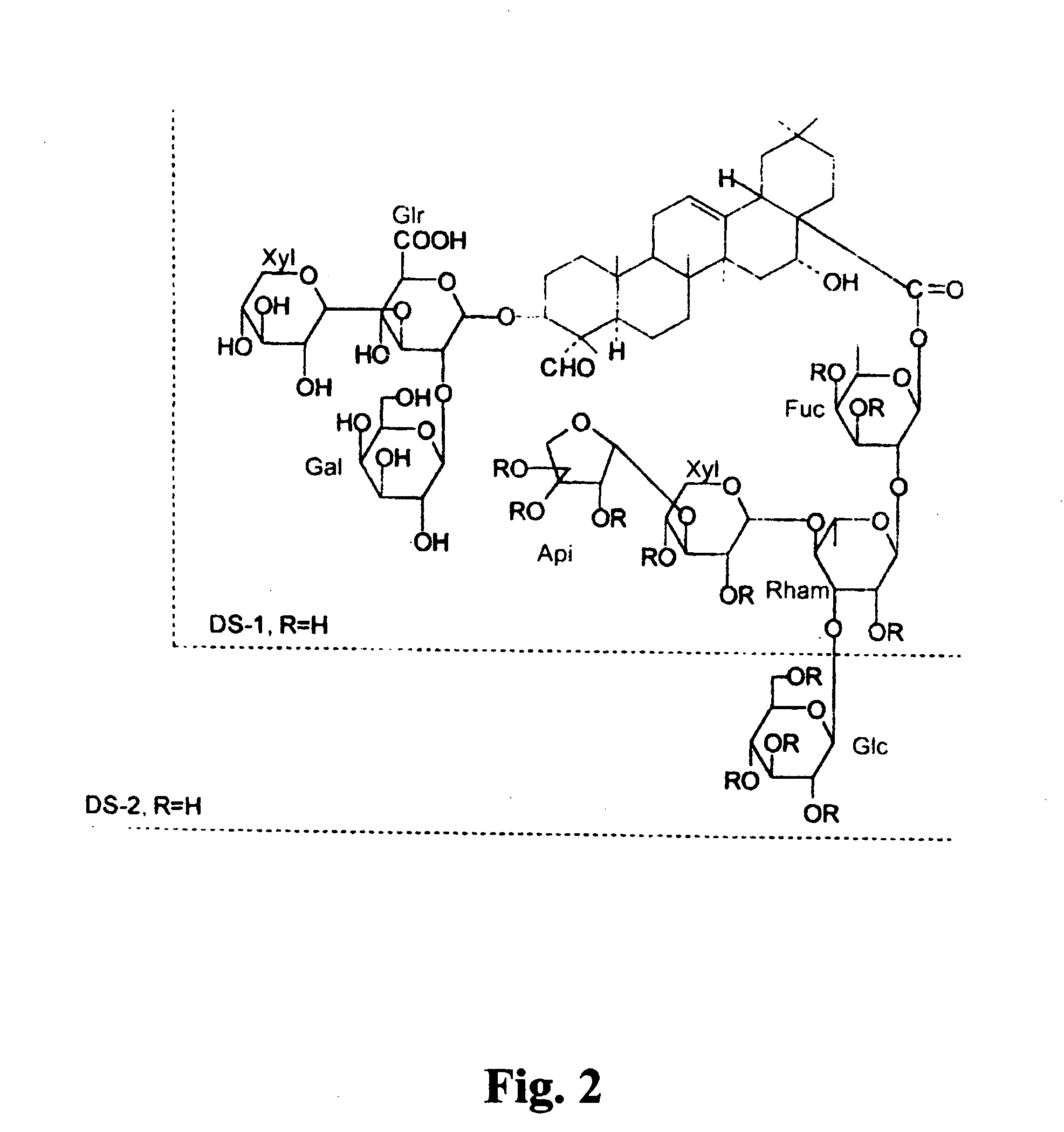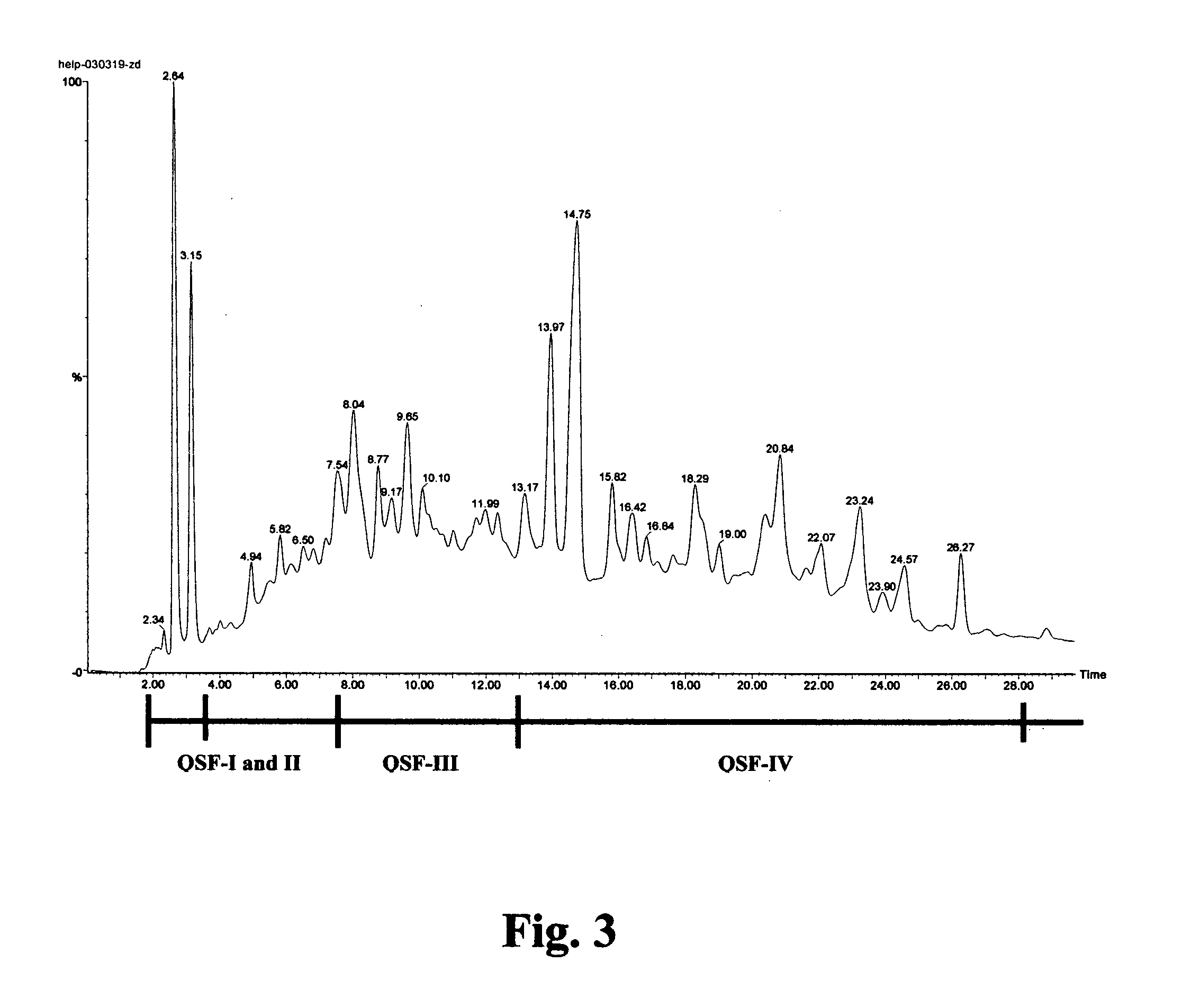Saponins as anticancer agent
a technology of saponins and anticancer agents, which is applied in the direction of snake antigen ingredients, biocide, antibody medical ingredients, etc., can solve the problems of complex mixtures and poorly separable mixtures of saponins, and achieve the effect of preventing cell pellet disturban
- Summary
- Abstract
- Description
- Claims
- Application Information
AI Technical Summary
Benefits of technology
Problems solved by technology
Method used
Image
Examples
example 11
Synergic Tests In Vitro
[0085] Cancer cells, H-157, were separately exposed to a combinations of saponins with concentrations of 250 to 0.2 micrograms per ml and extract of green tea with concentration of 40 micrograms per ml, or Palitaxel with concentration of 1.0×10.super.-8, or 5-FU with concentration of 1.0×10.super.-7 for 48 hours. MTT assays were purchased for detection of cancer cell inhibition.
Results:
[0086] A very significant potentiation effects were exhibited when saponins were exposed to cancer cells with other anticancer agents, crude extract of green tea, paclitaxel, and 5-FU in present invention. This potentiation effects may be related to triterpene saponins increasing the accumulation and cytotoxicity of the anticancer agents such as cisplatin, 5-FU, cis-platinum, paclitaxel, mitomycin C and mizoribine in human tumor cells. Glycosides of quillaic acid act on membranes by interacting with cholesterol, plant sterols, phospholipids, and proteins. Saponins treatment ...
PUM
| Property | Measurement | Unit |
|---|---|---|
| Biodegradability | aaaaa | aaaaa |
| Cell growth | aaaaa | aaaaa |
Abstract
Description
Claims
Application Information
 Login to View More
Login to View More - R&D
- Intellectual Property
- Life Sciences
- Materials
- Tech Scout
- Unparalleled Data Quality
- Higher Quality Content
- 60% Fewer Hallucinations
Browse by: Latest US Patents, China's latest patents, Technical Efficacy Thesaurus, Application Domain, Technology Topic, Popular Technical Reports.
© 2025 PatSnap. All rights reserved.Legal|Privacy policy|Modern Slavery Act Transparency Statement|Sitemap|About US| Contact US: help@patsnap.com



